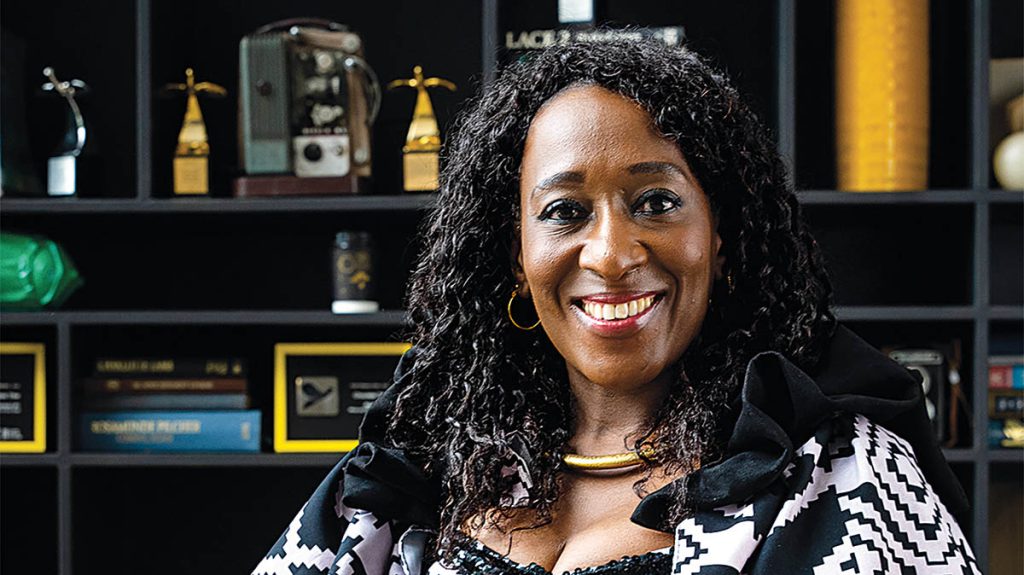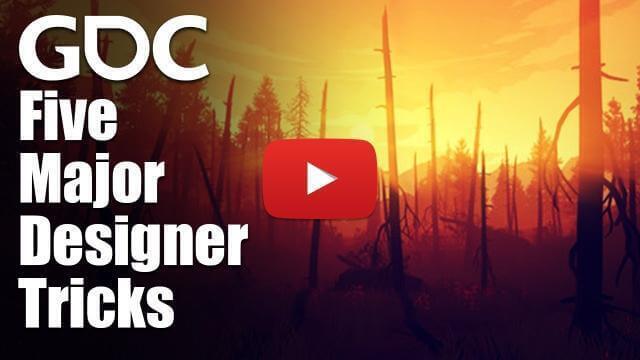Inside Summer Game Fest 2025: How Geoff Keighley and Producers Pulled Off Event Amid Industry Layoffs, ‘GTA 6’ Delay and Switch 2 Release
With the ongoing jobs cuts across the gaming industry, the shift of “Grand Theft Auto 6” from release this fall to a launch next spring, and the distraction of the first new Nintendo console in eight years, there was a chance that Summer Game Fest 2025 wouldn’t have the same allure as the annual video game showcase has had in years past.Related Stories
But the gamers came out in full force for the Geoff Keighley-hosted event on June 6, which live-streamed out of the YouTube Theater at SoFi Stadium in Los Angeles.
Popular on Variety
“Viewership was up significantly year over year,” Keighley told Variety. “Stream charts said it doubled its audience year over year for the peak concurrency to over 3 million peak concurrent viewers, which does not include China.”
In person, both the Summer Game Fest live showcase event and its subsequent weekend Play Days event for developers and press saw “significantly higher” media creator attendance this year: more than 600 registered attendees vs. “somewhere in the 400s” in 2024, per SGF. The boost is an indicator that both the current U.S. political climate and significant changes in 2025’s game release schedule, like the delay of “Grand Theft Auto 6” until next May, didn’t affect interest in the event.
“Things happen in the industry all the time that are big news worthy happenings,” Summer Game Fest producer and iam8bit co-creator Amanda White. “Switch 2 just happened and we’re here, it’s all working out, everybody’s having a great time playing games. It’s not irrelevant — it’s just part of the way things go.”
As big a hit as the Switch 2 was with consumers upon release — selling more than 3.5 million units during the first four days after its June 5 launch — and noted multiple times during the Summer Game Fest live showcase on June 6, Nintendo’s new console was not the star of the three-day Play Days event for developers and media in Downtown Los Angeles, which ran June 7-9.
“I have not seen a single attendee with a Switch 2 on campus,” SGF producer and iam8bit co-creator Jon M. Gibson said with a laugh. “There’s a few Switch 2s that Nintendo supplied. Some dev kits for Bandai and for Capcom. Of course, the launch happened on Thursday, so bandwidth from Nintendo is stretched thin with all the midnight launches and stuff. But they’re really supportive and supply some for some pre-release games, which is exciting.”
Some big video publishers such as EA, Take-Two and Ubisoft skipped this year’s SGF, eliminating potential splashy in-show hits for eagerly anticipated games like “Grand Theft Auto 6.” But SGF still managed a few big moments, like the announcement and trailer release for “Resident Evil Requiem.” Gibson and White attribute that reveal and other moments like it to the immense trust the festival has managed to build up with video game publishers in just a few years.
“We are very proud of our ability to keep the trust of all the publishers on campus,” Gibson said. “Six years into SGF as a whole, four years into Play Days, we’re very good. Because we have to print everything ahead of time, too. So there are lots of unannounced things that we’re very careful about who sees what. We have vendors who print and produce and manufacture physical objects under very tight wraps. We’re just very protective, because we know what it means to have to keep a secret because we’ve had our own games that we’ve had to announce, as well. Capcom is a great example with ‘Resident Evil.’ We knew that for a very long time, but they trusted us with information, and we were very careful about what our team actually knew what was going on.”
And even though some of the gaming giants sat this year out, White says conversations were already happening on the Play Days campus about who is ready to return next year and what they’ll bring.
“People get excited, they come and see. And each year we grow, so people see more potential,” White said.
As for next year, the June show will take place just a few weeks after the planned May 26 release for “GTA 6.” While Switch 2 didn’t seem to distract too much, will the draw of playing the newly launched “GTA 6” prove to be so powerful it outshines whatever could be announced at SGF 2026?
“My view is that all boats rise with ‘GTA’ launch,” Keighley said. “It is a singular cultural event that is the biggest thing in all of entertainment this decade. It will bring more people into gaming, sell lots of consoles and bring back lapsed gamers. There will never be a better time to feel the excitement and energy around gaming than SGF 2026.”
See more from Variety‘s Q&A with Keighley about Summer Game Fest 2025 below.
How was this year’s show impacted by the date shift for “GTA 6”? How much was planned before and after that big announcement?
So far as I know there wasn’t any material impact, but I think the date move did allow a number of teams to feel more confident announcing their launch dates.
Halfway through the year, what do you see as some of the biggest trends in gaming for 2025, and how did you look to reflect that in the show?
We continue to see some of the most interesting and successful games come from smaller teams outside of the traditional publisher system – games like “Clair Obscur,” “Blue Prince” and “REPO.” So we wanted to highlight some of those projects at the show like “Ill” and “Mortal Shell 2.”
What game announcements and trailers do you think resonated most with audiences after this show? What assets were the most popular?
“Resident Evil Requiem” was a massive moment. Also we saw a lot of love for “Ill” from a small team in Canada and Armenia.
#inside #summer #game #fest #how
Inside Summer Game Fest 2025: How Geoff Keighley and Producers Pulled Off Event Amid Industry Layoffs, ‘GTA 6’ Delay and Switch 2 Release
With the ongoing jobs cuts across the gaming industry, the shift of “Grand Theft Auto 6” from release this fall to a launch next spring, and the distraction of the first new Nintendo console in eight years, there was a chance that Summer Game Fest 2025 wouldn’t have the same allure as the annual video game showcase has had in years past.Related Stories
But the gamers came out in full force for the Geoff Keighley-hosted event on June 6, which live-streamed out of the YouTube Theater at SoFi Stadium in Los Angeles.
Popular on Variety
“Viewership was up significantly year over year,” Keighley told Variety. “Stream charts said it doubled its audience year over year for the peak concurrency to over 3 million peak concurrent viewers, which does not include China.”
In person, both the Summer Game Fest live showcase event and its subsequent weekend Play Days event for developers and press saw “significantly higher” media creator attendance this year: more than 600 registered attendees vs. “somewhere in the 400s” in 2024, per SGF. The boost is an indicator that both the current U.S. political climate and significant changes in 2025’s game release schedule, like the delay of “Grand Theft Auto 6” until next May, didn’t affect interest in the event.
“Things happen in the industry all the time that are big news worthy happenings,” Summer Game Fest producer and iam8bit co-creator Amanda White. “Switch 2 just happened and we’re here, it’s all working out, everybody’s having a great time playing games. It’s not irrelevant — it’s just part of the way things go.”
As big a hit as the Switch 2 was with consumers upon release — selling more than 3.5 million units during the first four days after its June 5 launch — and noted multiple times during the Summer Game Fest live showcase on June 6, Nintendo’s new console was not the star of the three-day Play Days event for developers and media in Downtown Los Angeles, which ran June 7-9.
“I have not seen a single attendee with a Switch 2 on campus,” SGF producer and iam8bit co-creator Jon M. Gibson said with a laugh. “There’s a few Switch 2s that Nintendo supplied. Some dev kits for Bandai and for Capcom. Of course, the launch happened on Thursday, so bandwidth from Nintendo is stretched thin with all the midnight launches and stuff. But they’re really supportive and supply some for some pre-release games, which is exciting.”
Some big video publishers such as EA, Take-Two and Ubisoft skipped this year’s SGF, eliminating potential splashy in-show hits for eagerly anticipated games like “Grand Theft Auto 6.” But SGF still managed a few big moments, like the announcement and trailer release for “Resident Evil Requiem.” Gibson and White attribute that reveal and other moments like it to the immense trust the festival has managed to build up with video game publishers in just a few years.
“We are very proud of our ability to keep the trust of all the publishers on campus,” Gibson said. “Six years into SGF as a whole, four years into Play Days, we’re very good. Because we have to print everything ahead of time, too. So there are lots of unannounced things that we’re very careful about who sees what. We have vendors who print and produce and manufacture physical objects under very tight wraps. We’re just very protective, because we know what it means to have to keep a secret because we’ve had our own games that we’ve had to announce, as well. Capcom is a great example with ‘Resident Evil.’ We knew that for a very long time, but they trusted us with information, and we were very careful about what our team actually knew what was going on.”
And even though some of the gaming giants sat this year out, White says conversations were already happening on the Play Days campus about who is ready to return next year and what they’ll bring.
“People get excited, they come and see. And each year we grow, so people see more potential,” White said.
As for next year, the June show will take place just a few weeks after the planned May 26 release for “GTA 6.” While Switch 2 didn’t seem to distract too much, will the draw of playing the newly launched “GTA 6” prove to be so powerful it outshines whatever could be announced at SGF 2026?
“My view is that all boats rise with ‘GTA’ launch,” Keighley said. “It is a singular cultural event that is the biggest thing in all of entertainment this decade. It will bring more people into gaming, sell lots of consoles and bring back lapsed gamers. There will never be a better time to feel the excitement and energy around gaming than SGF 2026.”
See more from Variety‘s Q&A with Keighley about Summer Game Fest 2025 below.
How was this year’s show impacted by the date shift for “GTA 6”? How much was planned before and after that big announcement?
So far as I know there wasn’t any material impact, but I think the date move did allow a number of teams to feel more confident announcing their launch dates.
Halfway through the year, what do you see as some of the biggest trends in gaming for 2025, and how did you look to reflect that in the show?
We continue to see some of the most interesting and successful games come from smaller teams outside of the traditional publisher system – games like “Clair Obscur,” “Blue Prince” and “REPO.” So we wanted to highlight some of those projects at the show like “Ill” and “Mortal Shell 2.”
What game announcements and trailers do you think resonated most with audiences after this show? What assets were the most popular?
“Resident Evil Requiem” was a massive moment. Also we saw a lot of love for “Ill” from a small team in Canada and Armenia.
#inside #summer #game #fest #how




·0 Reviews










